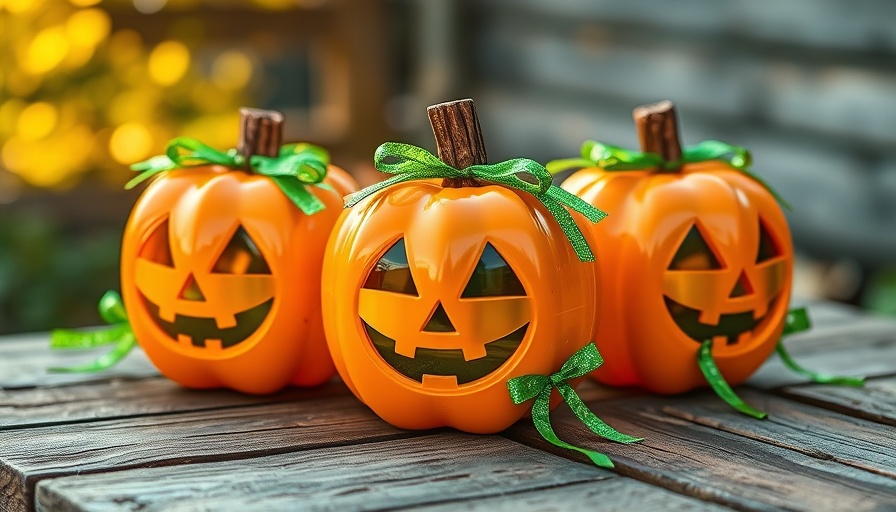
Embrace Sustainability with Eco-Friendly Halloween Decorations
Halloween can often feel like a frantic dash for commercialization, with mountains of plastic decorations that are discarded almost as quickly as they're bought. However, it doesn’t have to be this way! As boutique hospitality professionals, your commitment to sustainability can seamlessly translate into Halloween festivities. By integrating eco-friendly decor into your lodging environment, you can create a memorable experience for guests while remaining true to your eco-conscious ethos.
1. Upcycled Jack-o'-Lanterns: A Simple and Fun Craft
Transform your old plastic bottles into charming jack-o'-lanterns. Not only is this crafting activity easy and enjoyable, especially for families, but it also promotes recycling. Calculate the environmental benefits; by using discarded bottles instead of new plastic, you're fostering a zero-waste practice right in your garden space.
2. Spooky Terrariums: Nature Inside Your Home
Creating spooky terrariums is a brilliant way to connect with nature. Encourage kids to collect twigs, pinecones, or even Halloween-themed decorations for a fun weekend project. Not only will it foster creativity, but these terrariums can double as decorations long after Halloween. Reuse these designs for Thanksgiving with a simple change of decor inside the jar!
3. Ghostly Hanging Leaves: Nature's Art
Prepare your outdoor areas by turning fallen leaves into ghostly decorations. Simply paint leaves white and draw spooky faces to hang them around your property. This activity not only fosters creativity in children but also shows them the value of utilizing natural resources, promoting natural landscaping that aligns with your commitment to the environment.
4. Boo Board: Show Off Your Craft Skills
If you have old fence boards lying around, why not transform them into charming signs? A little paint and imagination can turn scrap wood into festive decor for your establishment. Hang them near your entrance to welcome visitors, showcasing your commitment to sustainable home design and creativity!
5. Compelling Candles: Sustainable Illumination
Trade out harmful paraffin candles for beeswax ones. These options not only burn cleanly but also provide a cozy ambiance perfect for Halloween fright nights. Promote energy efficiency by using battery-operated lights instead. You’ll not only conserve energy but also provide a safer environment for your guests.
6. The Perks of Heirloom Pumpkins
Thrift stores are treasure troves for gourd lovers. An heirloom pumpkin or gourd not only adds flair but minimizes waste. You can compost these treasures after Halloween or repurpose them into delicious culinary delights for your guests.
7. DIY Mummy Jars: Reusable and Creative Crafts
Give new life to your mason jars by wrapping them in strips of gauze to imitate mummies. This classic craft is a fantastic way to recycle. Guests will appreciate the unique decorations while also learning about zero-waste practices in an engaging way.
8. The Importance of Choosing Non-Toxic Materials
All decorations should prioritize non-toxic materials. Paints and adhesives can have irreversible effects on both the environment and health. Opt for natural, non-toxic options that both benefit your surroundings and keep your guests safe.
Why This Matters: Making an Impact on Your Guests
As hospitality leaders dedicated to sustainability, it’s crucial to show your guests the immense impact of eco-friendly practices. When you incorporate sustainable decorations, it not only creates a unique and enriching environment but fosters a strong connection to your eco-conscious values. Guests will appreciate the attention to detail while aligning with their interests in sustainable living.
Ready to dive into eco-friendly practices this Halloween? This holiday offers you the perfect opportunity to combine creativity with sustainability. Transform your space into a vibrant showcase of Halloween spirit, demonstrating your commitment to both your guests' experience and the planet. Each small action contributes to a larger movement towards a greener future.
 Add Row
Add Row  Add
Add 




Write A Comment